Photos, no matter how skilled the photographer, can’t do justice to the sights of the mist-shrouded peaks that await to dazzle the senses of its visitors to northern Vietnam’s number one-tourism hub. Legend has it that the gods sent a family of dragons to guard Hai Phong from invaders. The creatures spat out chunks of jade, the size of mountains, that eventually formed a barricade of 1,600 limestone islands that make up the Halong Bay!
Imagine you’re fast asleep when the phone alarm goes off at 7:00 am. Rather than waking up at your own bedroom, you’re in a bunk bed in a shared dorm. Pawing around the surface of the bed, you eventually locate your phone, which at first you find a little hard because you’re only half-conscious. But, once you fix your eyes on it, you see several images that introduce you to your surroundings. So, that was me, awakened from four hours’ sleep. I lazily emerged, zombie-like, straight into the shower, a quick breakfast, about 10 minutes later, I’ve already checked-out from my Hanoi hostel that I checked-in four-and-a-half hours ago. Sharp at 8:00 am, a young Vietnamese man popped inside the hostel reception, “A-med?” I nodded and followed him to join a group of 18 other people on board a luxury bus.
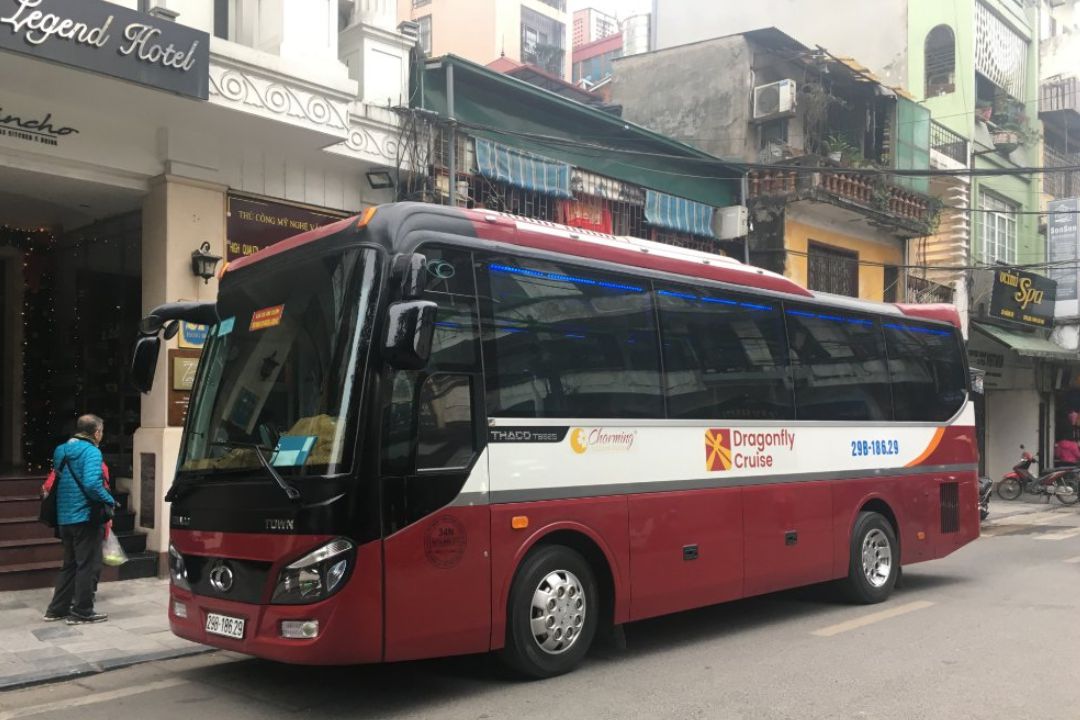
Travel time was four hours from Hanoi to Halong Bay, the guide introduced himself, gave us brief history lessons and a bit of humor.
We drove east towards the Vietnam coastline, passing picturesque rice fields and rural villages. Along the way, we made two stops, the first one at a handicrafts store for a bathroom and snack break and the second stop at an oyster farm where they cultivated pearls. By mid-day, we arrived at Tuan Chau Harbor, the largest artificial tourist harbor in Asia.
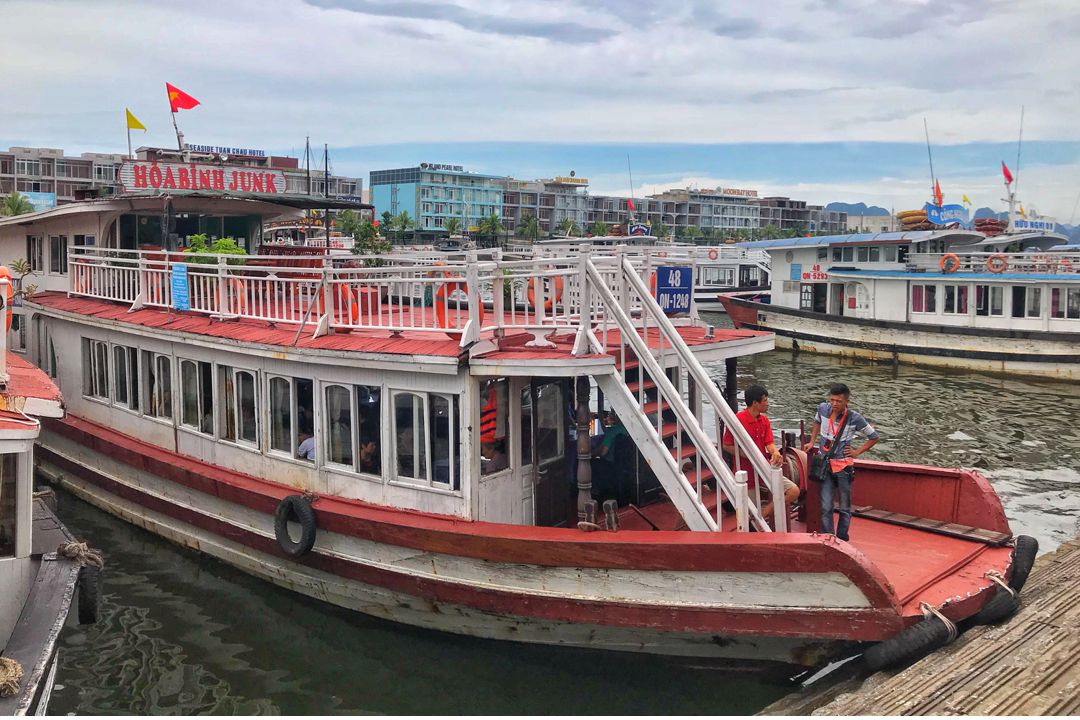
There were dozens of docked cruise junks and ships at the Tuan Chau Harbor.
Once everyone disembarked the bus, our guide distributed the Halong Bay excursion tickets and pulled out a pole with a flag to keep our group together while we followed him to the pier to board the boat. We barely set sail and then our guide started introducing the captain and the crew members of the traditional wooden junk boat. Finally, after reaching the end of the roll call, the crew shuffled back to their duties leaving us alone.
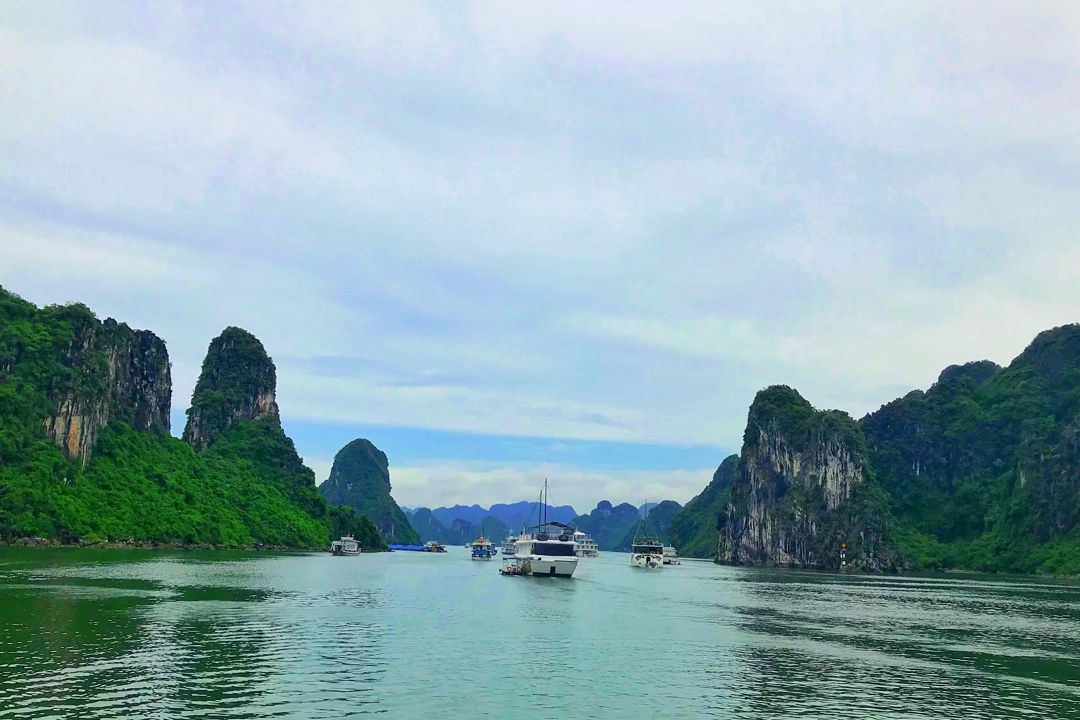
We teared ourselves away from the teak deck and cold drinks when the wondrous scenery began to unfold as we glided out into the bay.
The first sight was a cluster of cruise ships sailing around the main bay, from bigger vessels—like the Viking River Cruises—to the smaller, and more specialized vessels—like those from Indochina Junk and Bhaya Cruises. The landscape soon became harder to describe, but it was a world-renowned display: hundreds and hundreds of proud, moss-dappled limestone karst cliffs cut a labyrinth through the boundless blue waters of the Gulf of Tonkin. There are more than 3000 islands in the bay, eroded by the wind and waves, into startling shapes, some in the form of slumbering creatures ready to stir. Oh yes, I have seen the iconic view on numerous postcards of Vietnam. Some twenty minutes later, we were ushered for lunch. There was absolutely nothing special about the food, except that its being “not good” (Just kidding). That was an ice breaker to start a conversation with the others, something like “What on earth are we f—ing eating?”.
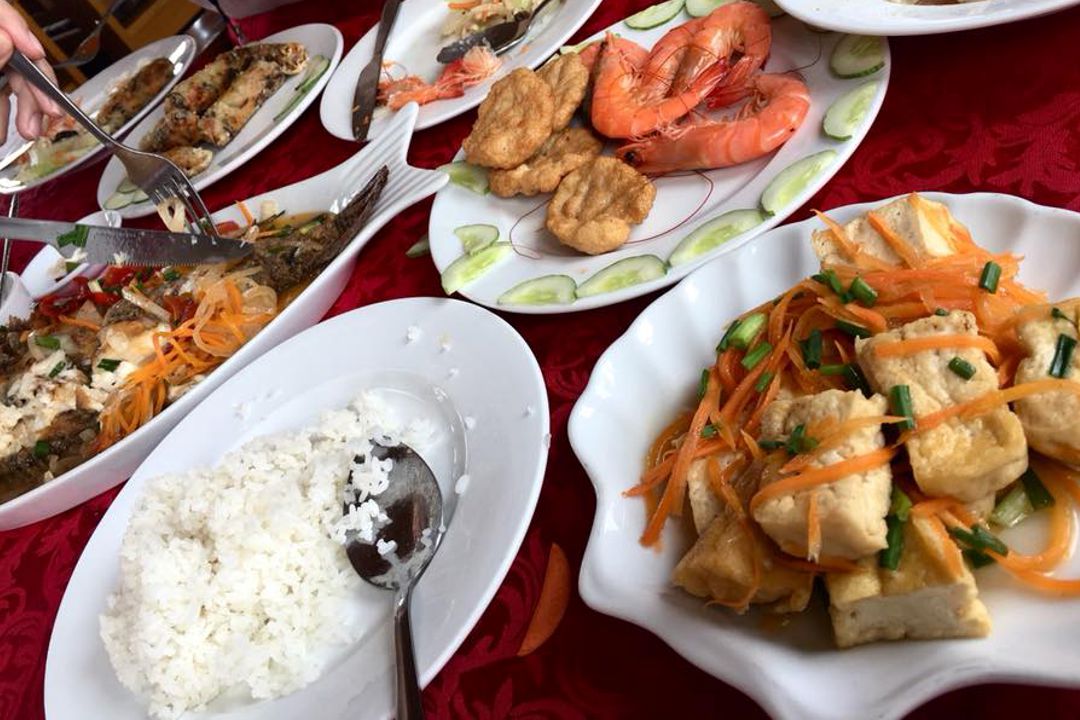
The presentation of the dishes seemed straight out of a five-star restaurant.
Our junk boat was not how I envisioned it to be. It was small, didn’t have the signature sails, but was clean and comfortable enough for a five-hour cruise. To truly appreciate the natural beauty with a modicum of solitude is to take an overnight cruise on a luxury junk — waking in the morning without the distraction of the influx of tourists aching for a piece of Vietnam’s allure. But, the longer itinerary requires to cruise further down where it keeps the hordes of tourists away. And, the views that make Halong Bay so famous stretch far beyond just the Gulf, with smaller bays and islets—like Bai Tu Long Bay and nearby Móng Cái—boasting lush landscaping and scenic beaches.
Our boat gently carved through the meandering waterways and docked by the platform on Dau Go Island, where we disembarked and followed our guide up a spiral staircase of 129 steps staring at the immense karst wall that stood before us.
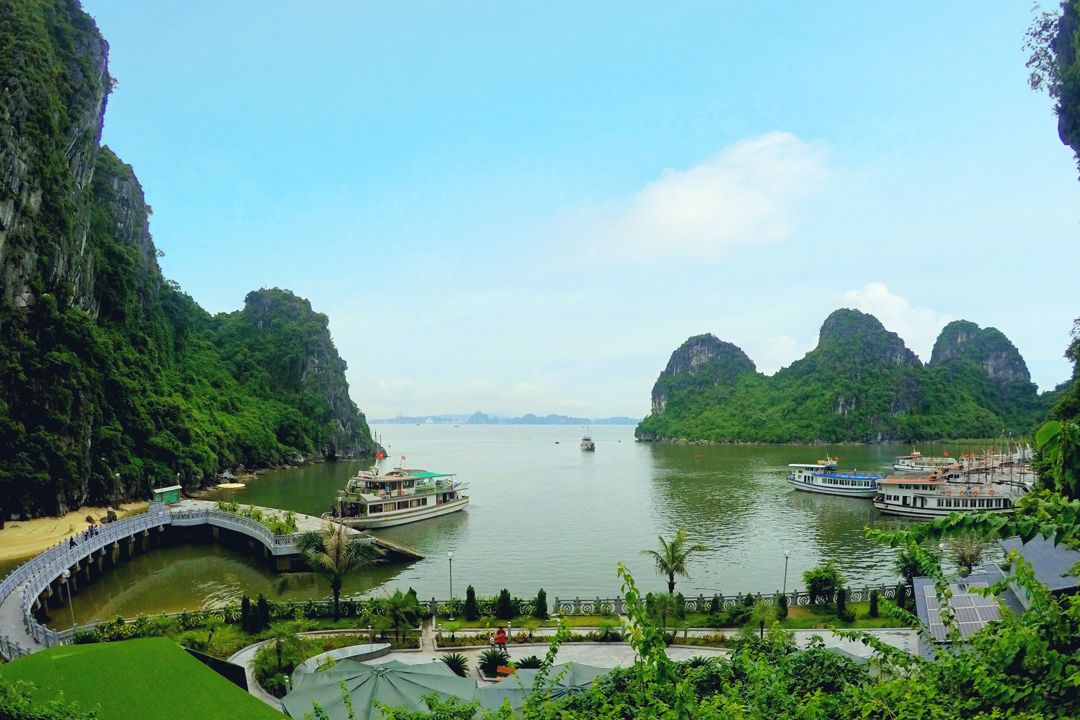
The ascent slowly unveiled a stunning panoramic view of this part of the bay.
We arrived at the entrance of the Thien Cung Grotto (Heavenly Cave), a dead cave, meaning water no longer drips and new deposits no longer form. A local legend says that once a young girl married a dragon that resided inside the cave in order to save her village from drought.
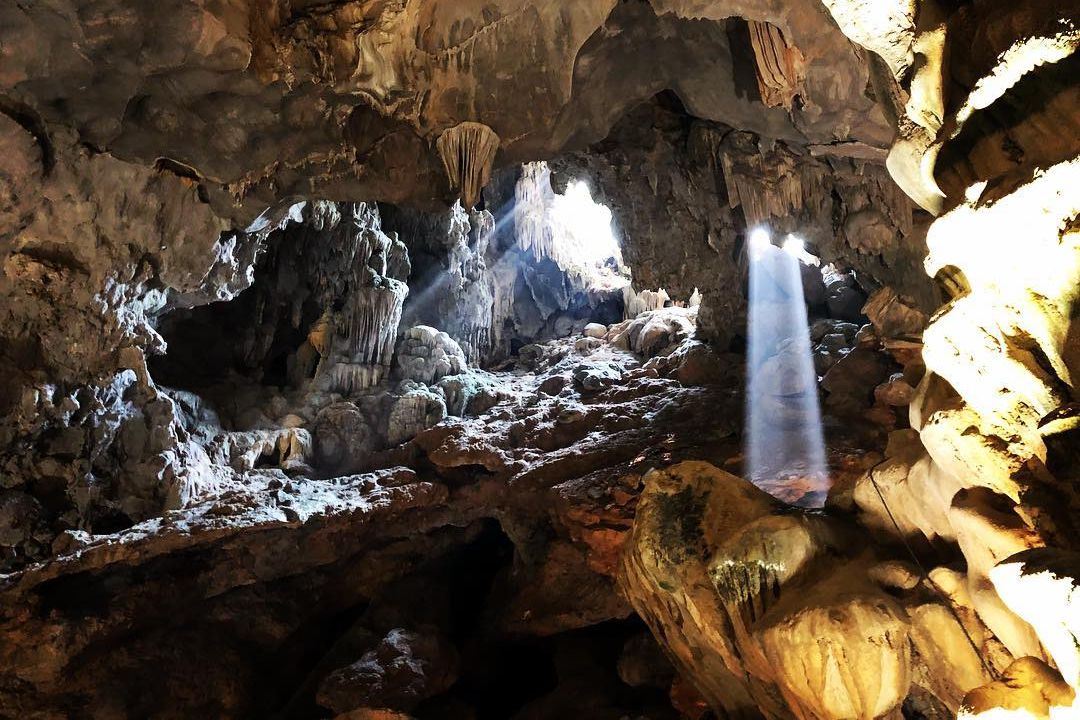
The cave was amazing, but turned out to be a bit hokey, with the cheesy lighting and tons of crowds.
My eyes immediately set on the phallic stalagmites, there were shadows of camels urinating and women taking showers. We spent more than half an hour inside, another 15 minutes on the dock for our boat to jostle its way up front. We continued sailing for another hour and watched the sun throw long shadows on the water and bathe the karsts in a soft-focus glow. We arrived at an inlet around the caves where we were allowed to choose kayaking or the bamboo boat. I opted the bamboo boat since the kayaks they provided seemed straight out of the 1970s and were recreational, not sit-on-tops, and were not safe for open water or currents.
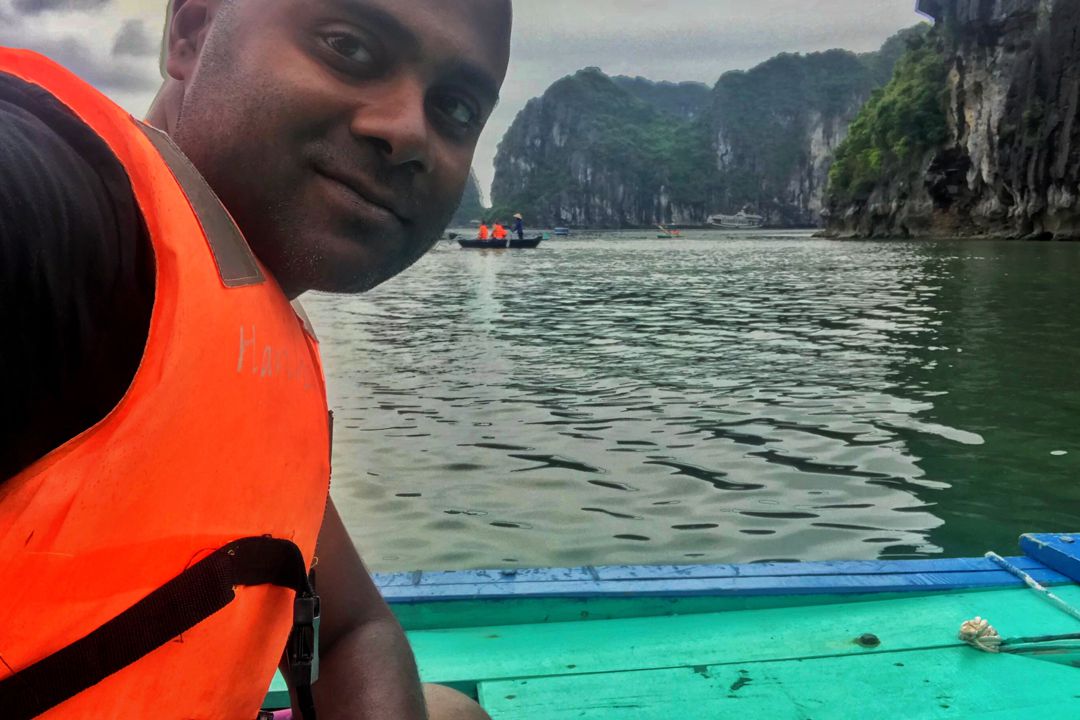
Our guide busked his way using the paddles to fend off encroaching stalagmites and stalactites.
As the sun began to sink below the horizon, the limestone peaks assumed their true majesty. It became more apparent why Halong Bay is a UNESCO World Heritage site. The lush islands speckled along the emerald hued waters have a history that dates back roughly 18,000 years and feature an astonishing collection of both populous floating fishing villages, uninhabited islands, and mysterious caves and grottos. Despite of the multiple wars and invasions, Halong Bay has retained nearly all of its original splendor. The Full Day Halong Bay Islands and Caves tour came to an end too soon, and we returned to dry land, but as I’m driven to Hanoi I glance back at the limestone cliffs cluttering the horizon and know I will now remember Halong Bay with a smile rather than a shiver.

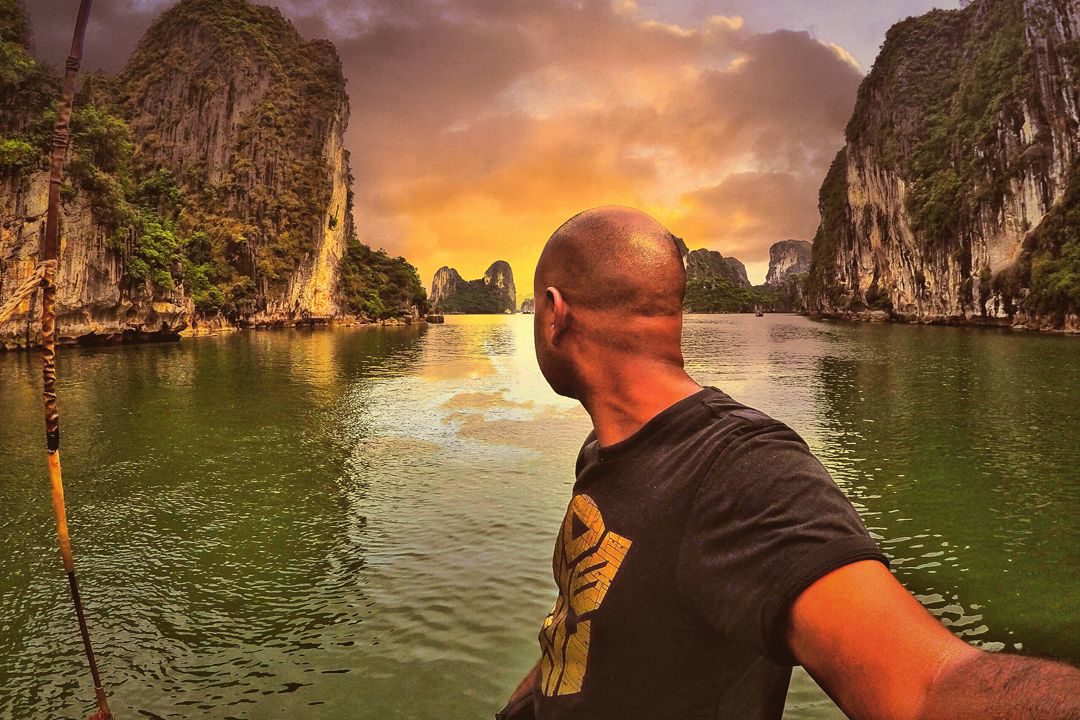
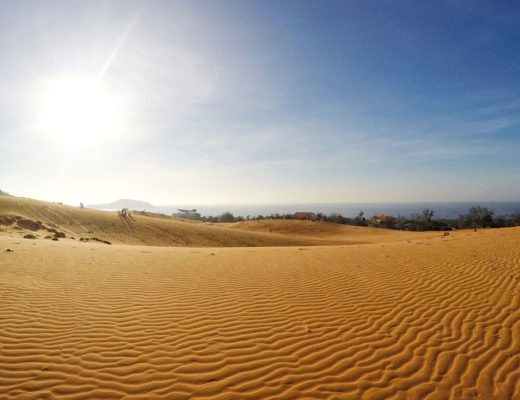
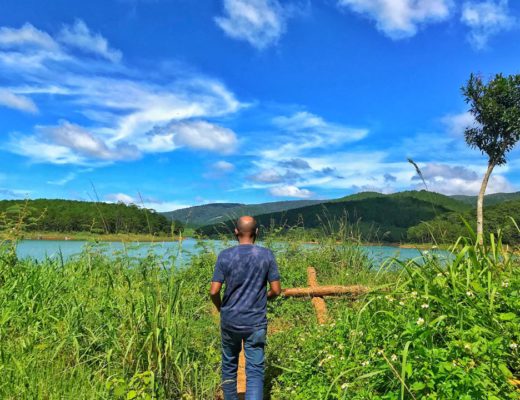
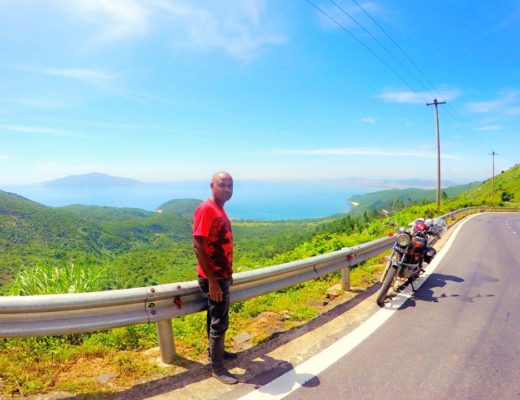
No Comments